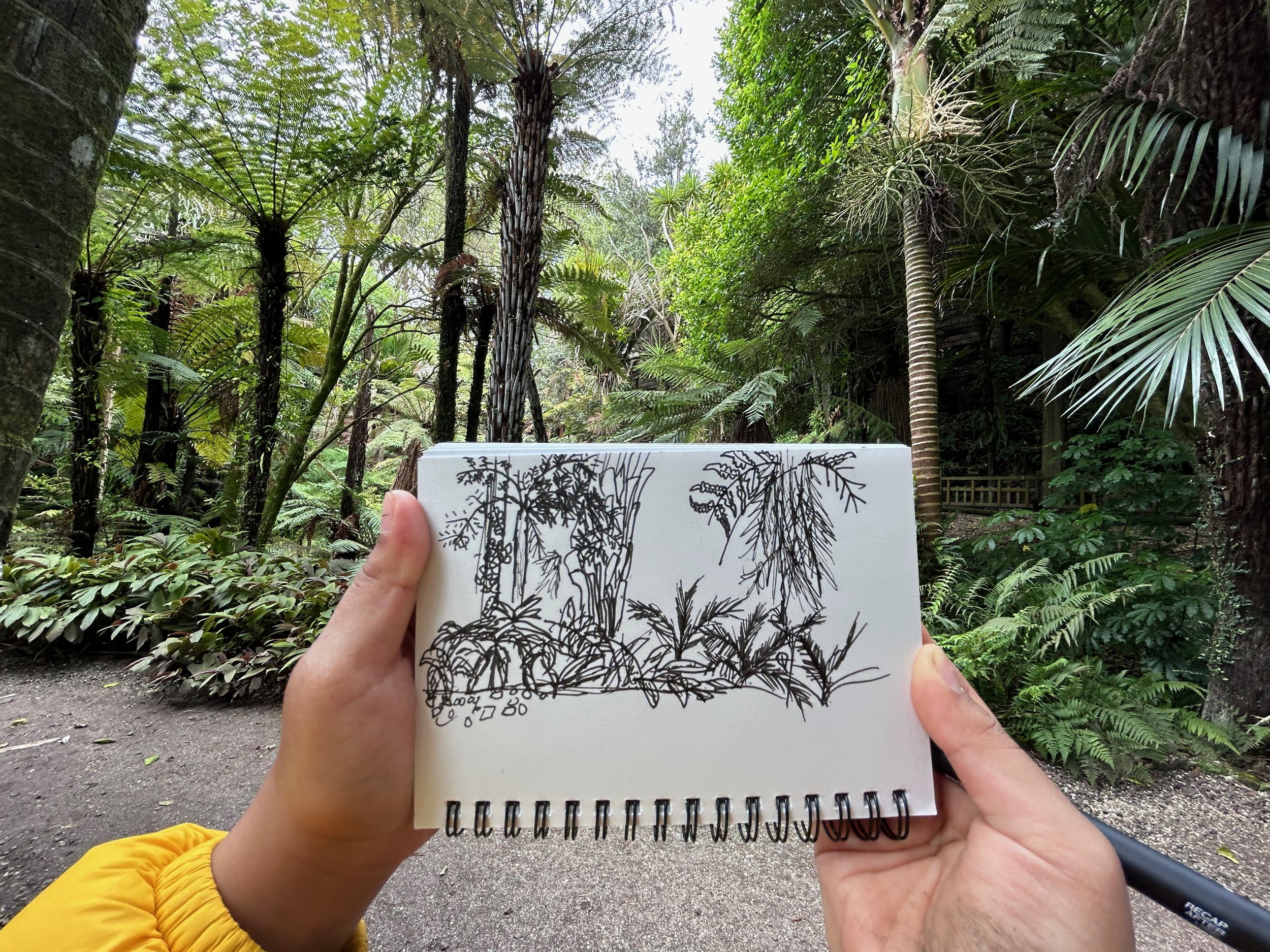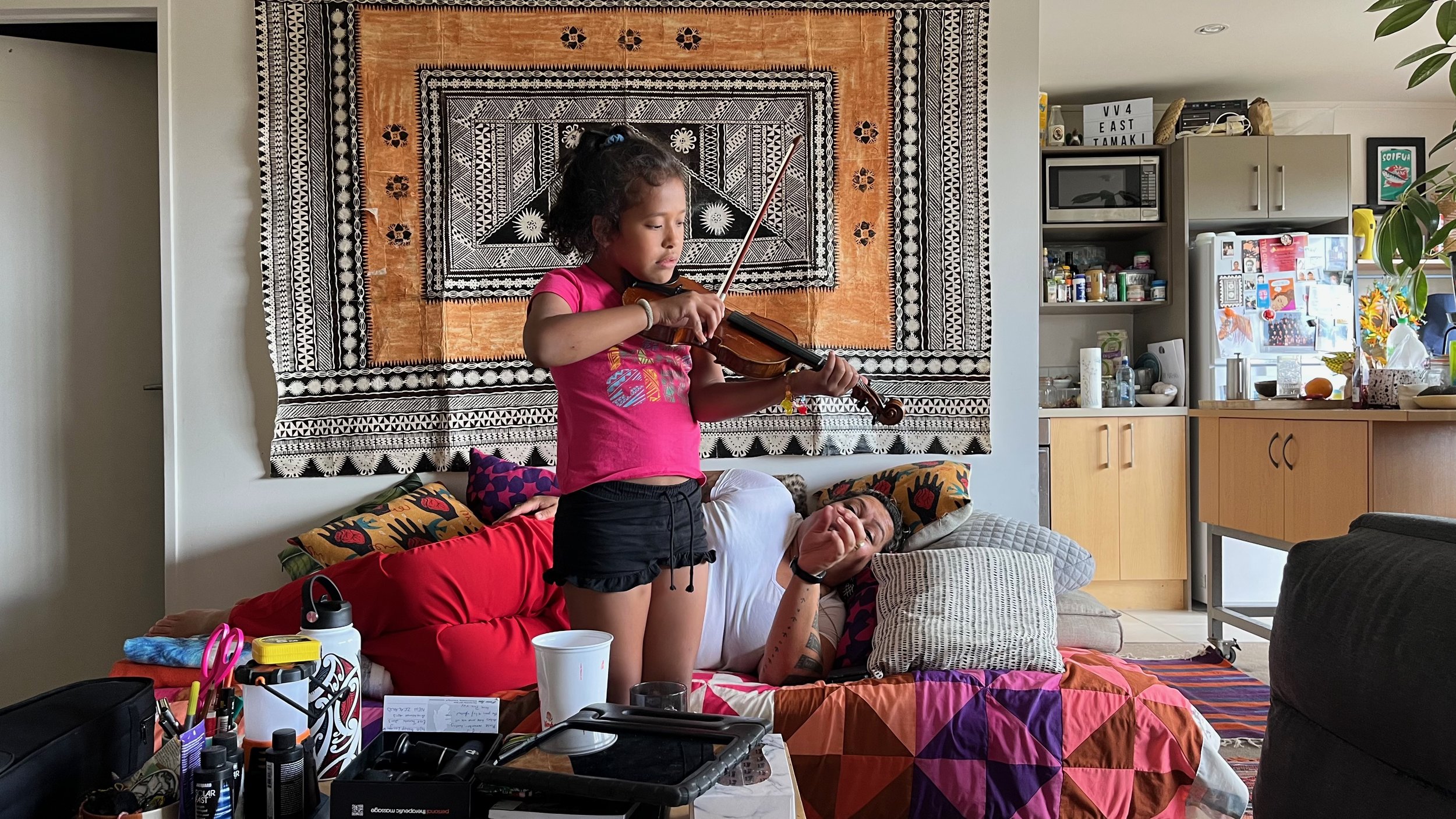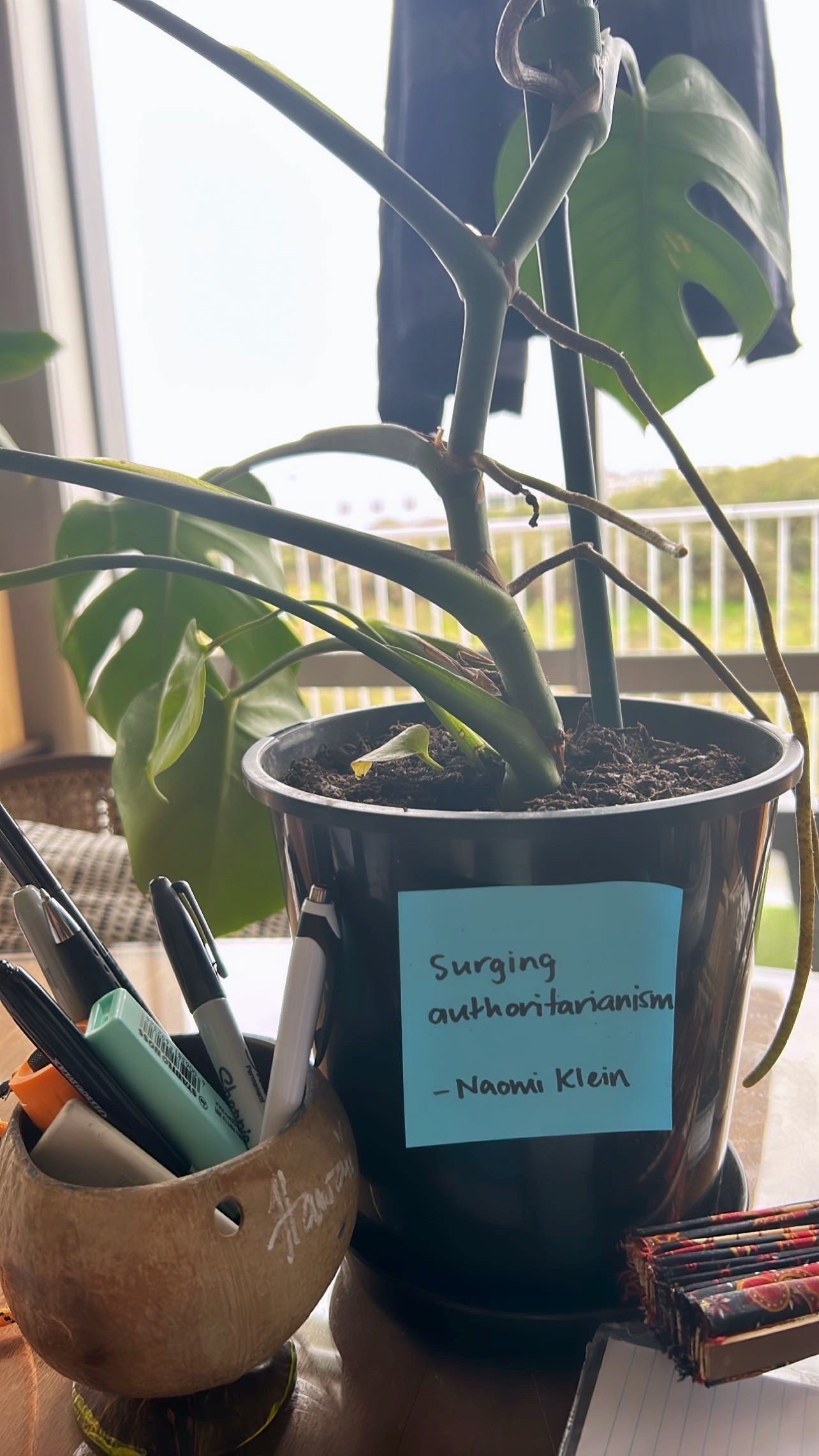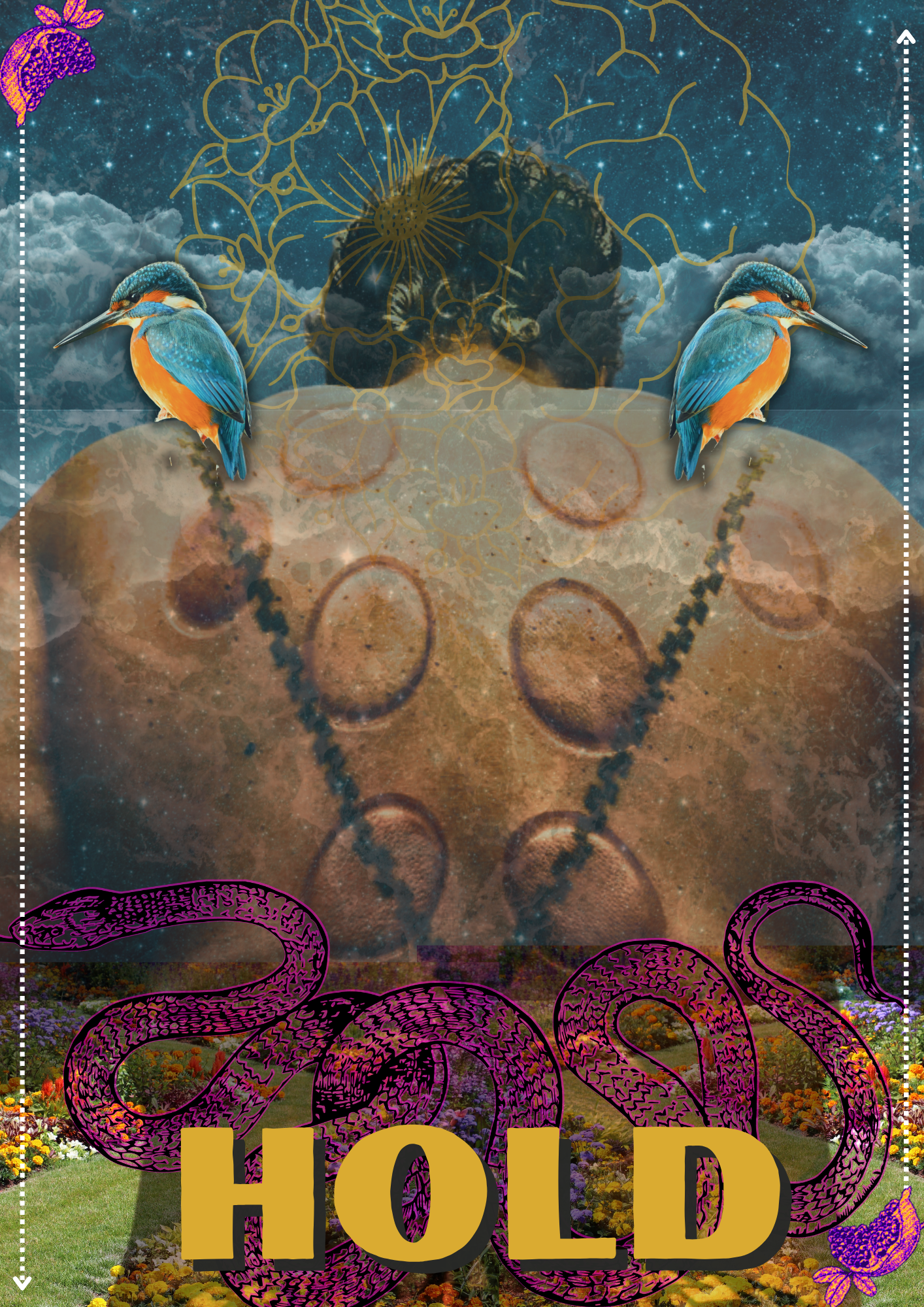
Ema Tavola
SummaryEma Tavola is a Fijian-Pākehā visual artist who moved to Auckland from Suva, Fiji aged 19. She has called South Auckland home for 20+ years and now lives with her 9 year old daughter, Lanuola, in a commercial building in East Tāmaki.
She began her practice as a painter in Suva, Fiji, then moved to Auckland to study Visual Arts where she majored in Sculpture and became particularly interested in the genre of social practice.
Ema started curating in 2004 as an extension of her visual arts practice and interest in the socio-political positioning of art in society, and have continued on managing galleries, public programming and curatorial projects since then.
Creative Process
The FALE-ship was a short sharp opportunity for creative ideas to be sewn, played with and formed into quick drafts for future development.
I spent time visiting sites, whilst also parenting and going on adventures with my daughter, writing, and listening whilst spending time learning about Fijian language, whakapapa and pre-history through talanoa with my father, Kaliopate Tavola who visited during Fijian Language Week and the FALE-ship timeframe.
I was able to establish the work for my project, To Live and Die in South Auckland through some experimental collage works, and began writing a lyrical essay on bleeding, grieving and rebirth.

Photo by Helen Tavola


Creative Workspace
My ‘making space’ is my home - a small - two-bedroom apartment above the gallery (Vunilagi Vou) that I share with my daughter, Lanuola.
At home, I can fit my making practice, planning and admin around the demands of parenting.
I consider my experience of motherhood as my greatest teacher. The challenges and joys, particularly as a solo mother, of growing a girl child is an opportunity to re-parent, address trauma and grow, with her.
Our home is a safe space for both of us.
I’m in the process of transitioning from running Vunilagi Vou as a public-facing gallery to a creative studio to work on my own practice, writing and postgraduate studies in 2024.
Whilst shapeshifting, my visual arts practice is moving from the shadows of my life into the centre, and the FALE-ship provided me with the time and space to use my visual arts practice to respond to Fijian Language Week, Fiji Day and the time I was able to share with my father.
Final Works
The FALE-ship residency allowed me time and space to develop two digital collage works for my body of work entitled, To Live and Die in South Auckland.
These works are a continuation from a series made in 2021 called Grounded, Flux + Faith commissioned for the exhibition Volume: Bodies of Knowledge curated by Dr Torika Bolatagici for Community Read Room (Naarm / Melbourne).
These works reference the design, symbolism and practice of tarot card reading.
In the body of work To Live and Die in South Auckland, I’m mapping the landscape I’ve lived in for most of my adult life with sites of significance where moments of life (growth) and death (literal, emotional) have occurred, simultaneously. Two sites that have informed these works are East Tamaki Rugby Club car park and Galbraith Building at Middlemore Hospital. I visited both sites during the FALE-ship timeframe and documented aspects, details and observations.


‘ECHO’
The work I made in response to Galbraith Building at Middlemore Hospital uses a photo I took on my site visit, and combines photographs from my personal archive and found imagery from the Internet.
The burning fishing boats are from National Geographic, they show Vietnamese fishing vessels being burned by the Palauan government as a means to deter illegal fishing in Palauan waters. This visual is one I’ve used in many of my talks and presentations; it is not only a proud example of the fierce protection Moana Pacific people have for our lands, seas and all living things they support, but the powerful forces of water and fire momentarily co-existing. Smoke is a powerful cleanser in many spiritual practices, and burning as a means of renewal is a metaphor for the way I approach the active practice of decolonisation.
To provide some context, Galbraith Building houses the birthing unit and gynaecological unit at Middlemore Hospital. It’s a place where I’ve literally experienced life and death, been held and cared for by the most amazing nurses and doctors, where I’ve seen and experienced the deepest extremes of love, grief and despair.
The term ‘echo’ refers to motherhood as a way we practise and see clearly how we were mothered, and the opportunity to change, break, heal in order to alter the ways the next generation learn to love. My experience of motherhood is a complex amalgamation of diamonds and drama, fire and water.
The term ‘echo’ also responds to the power of caregiving in these spaces; when we are treated with dignity, respect and care, we see ourselves as worthy of those things. Unfortunately, the opposite also applies.
‘HOLD’
In the second work, the term ‘hold’ refers to the act of being held by my ancestors. An experience I have an acute awareness of in times of meditation, when practising emotional regulation and in dreaming. In this work, the body is a monument, where marks left from cupping therapy take on the appearance of the lunar cycle which often features in my work.
Fale-ship Questionnaire
What inspires you to create art?
My upbringing and lived experience of ‘otherness / othering’ in multiple contexts, has always placed an emphasis on the power of creative expression to allow different ways of understanding the world to be seen, shared and validated. I make art because it is a sense of connection to the world, and to myself, and in its presentation, allows others to feel connected.
The principle is what underpinned my curatorial work too, just as an act of service to artists and audiences rather than my own voice.
What was your intent going into Fale-ship?
As an artist who has been making slowly for two decades, this period was about experimentation and remembering, germinating ideas from seeds, cultivating potential and dreaming.
What does Hau ofa’s ‘Sea of Islands’ mean to you ?
Ha'u’ ofa’s ‘sea of islands’ has always been a guiding philosophy. Making exhibitions has its limitations; a gallery and the culture, entrenched in colonial ‘ways of seeing’. In a sense, making exhibitions is the smallness of Hau’ ofa’s islands. Making art is limitless, its the Ocean - expansive, unpredictable, healing, powerful.






